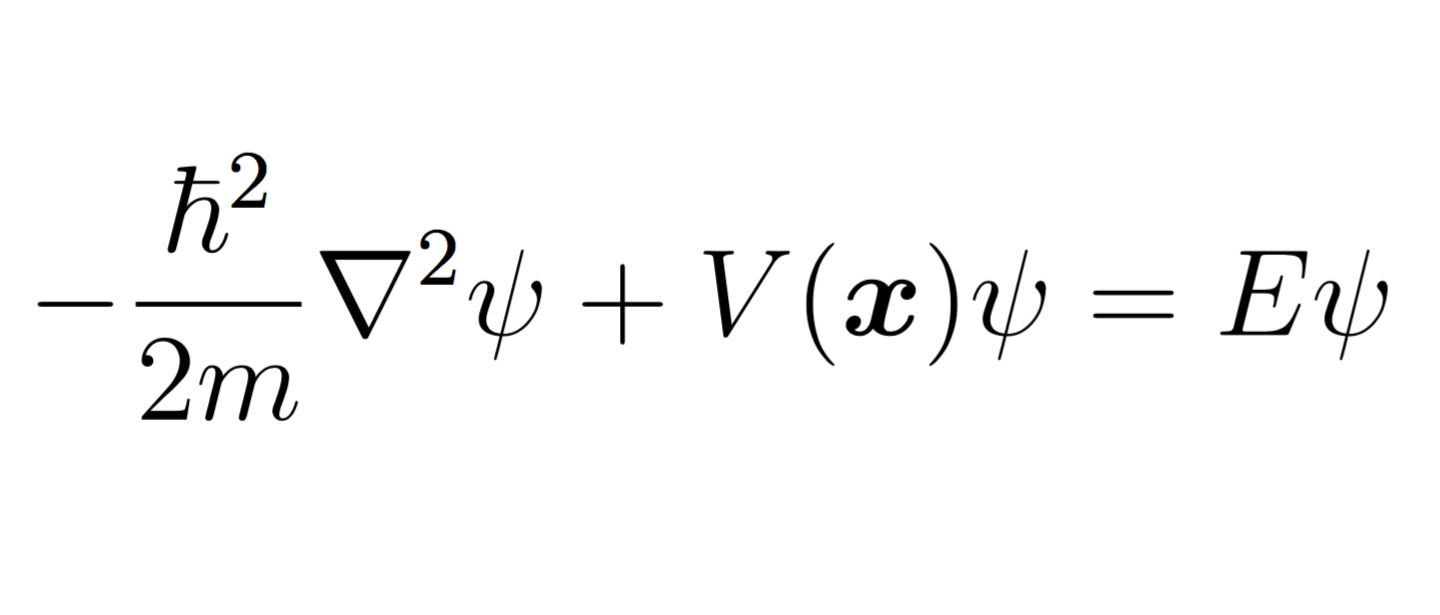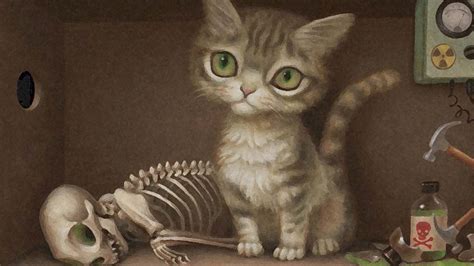I saw the new Spiderman movie last night. More of the multiverse is in it. The idea that there are an infinite number of parallel universes, each inaccessible to the others, except in Marvel movies. Where did this idea come from, a parallel universe that we can never experience?

The Problem
In 1913 Niels Bohr, in Copenhagen, proposed a model of the hydrogen atom which calculated the energy of an electron in the atom by describing it with an integer,
n = 1, 2, 3, ...
such that
En = -RH/n2
Where RH is a constant. In any formulation of this equation, n can never be a non-integer, like 1.2 or 4.6. This equation was quickly taken to represent energy levels within the hydrogen atom, where n = 1 was the lowest energy level, n = 2 was the next higher, etc. We cannot observe these levels directly; we only observe the jumps between these energy levels as light emitted (jumping down to a lower value of n) or light absorbed (jumping to a higher value of n).


How an integer becomes a single energy value is the heart of quantum theory, and in 1925 two proposals were put forward to explain this.
Quantum Physics
The first was proposed by Werner Heisenberg, Max Born, and Pascual Jordan. This is the matrix mechanics version, also known as the Copenhagen interpretation. They used square matrices to describe the energy levels as the row index and quantum states (like "initial" and "final,", which they called "eigenstates") as the column index. The data inside the matrix they called "eigenvectors," German for "unique vectors." The matrices had some internal properties I won't go into now, but the problem might already be apparent to you. The spectroscopists, those who study the interaction of light with matter, had the energies nailed down for 25 years already. And in this method, the matrix uses two different variables to represent that one measurement (the difference of which equals that one measurement) or one energy in, two variables out. This is where all the trouble starts. I'll get back to this flaw later.
The second proposal came from Edwin Schrödinger. His was known as Wave mechanics, and it is the way quantum chemistry is done today. Schrödinger thought of the electrons in the hydrogen atom as waves, standing waves held in place by the opposite charge of the nucleus. The idea of physical matter behaving as a wave was proposed a year earlier by De Broglie and demonstrated to be true in the following three years. Schrödinger formulated an equation that produces the energy of any orbital in hydrogen, or any other atom, using mathematical equations which describe that standing wave ("eigenfunctions"). To describe all orbitals in all atoms he needed two more quantum numbers, ℓ and mℓ. Three variables in, one energy out.

This equation calculates the total energy of the electron by adding the kinetic energy of the wavefunction (which is represented as a single variable, psi) to the potential energy, V.
The method of Schrödinger was by far superior to that of matrix mechanics, and the wave model was soon adopted by all the chemists who work with atoms. Soon the method was expanded to account for the properties of molecules by combining many atomic wavefunctions into bonding orbitals (valence bond theory) or into molecular orbital (molecular orbital theory). The calculated energies can be compared to the measured energies to see if the model is correct.
Schrödinger's method made a simple assumption: that the waving electron acted much like a note on a guitar string, with nodes (not-waving bits) at the ends, and antinodes (the waving bits) toward the middle. The quantum numbers were just the count of the antinodes in any particular wavefunction.
Data
How you represent data is vital in interpreting what the data means. In these two approaches we have two very different ways of handling the measured energies. The matrix mechanics model used two energies to describe one measurement, which is represented by four variables inside the matrix. For one energy measurement, four variables are being manipulated to describe it. In the wave mechanics model, the differences in energy are ignored, and just the one energy of one state, initial or final, is calculated from three quantum numbers (the situation is more complex: the three quantum numbers allow you to select the equations to be used in calculating the energy, each dependent on the x, y and z coordinates around the nucleus, but in the end you are dependent on three variables either way). Summarizing:
Matrix mechanics: One measurement generates four variables
Wave mechanics: three variables generate one measurement
When I was doing X-ray crystallography we measured the intensity of the many dots of X-rays that came from a single beam of X-rays directed onto a crystal. For a 20-atom molecule we typically measure 1500 - 2000 dots, which were our data. We would then model that data using a molecule; the exact locations of the atoms, and how they thermally vibrated, was used to calculate the X-ray pattern, and that was compared to the measured data. Each atom had three spatial coordinates, and six thermal parameters, for nine variables per atom. For 20 atoms, that's 180 variables. The data/variable ratio was 8.3, not bad, not great. If that ratio dropped below 5 we'd begin to question how well our model was fitting our data. Below 3.0 we could not trust the model at all, because there are so many variables we could adjust we always got a very good fit of the data even if the model was completely wrong.
Matrix Mechanics
For the matrix mechanics method, the data/variable ratio is 0.25. For each measurement, there are four variables to adjust. The data is measured, then the variables are found.
Wave Mechanics
In wave mechanics, the order of the operations is reversed; variables are first determined, then the energy is calculated and compared to the measurement. This means the data/variable ratio doesn't apply here. This was Schrödinger's genius, and why we trust wave mechanics over matrix mechanics methods.
The Multiverse
So where does the multiverse come in? It comes from matrix mechanics. It's one of the four variables calculated for one measurement. A very simple version looks like this:
x2 = 1
so
x = 1 and x = -1
Our universe is the x = 1 universe, and the other one is the x = -1 universe. The multiverse is a product of having four variables "add up" to one measurement, when those variables can be all sorts of different numbers which make the math work. In other words, the multiverse is the product of a lousy way of representing a physical phenomenon in a very mathematical way. The x = 1 and x = -1 are then described the same way (hey, they are both 1!) and taken as being the same thing (parallel universes) and there you are, a multiverse.
There is not a shred of evidence that a multiverse exists. It's a figment of a poor calculation. It ignores that a far better calculation exists, one that doesn't predict oddities.
Schrödinger's Cat
Schrödinger saw the oddities in the matrix mechanics model, and wanted to point it out. So he invented a situation that looks entirely silly. It's now known as Schrödinger's cat: put a cat into a box along with a radioisotope that has a 50/50 chance of triggering a device within an hour which will kill the cat (the original was a cyanide capsule, but after the Nazis we shy away from that mechanism). After one hour, what is the state of the cat? Before opening the box, matrix mechanics predicts that the cat is neither alive nor dead, but in some sort of in-between state, x = 0, the sum of
x = (1 + -1)*(1/2)
(the "1/2" is to make sure the cat has not become two cats). This was known as "superposition." Schrödinger's point is that this is silly; there can't be anything other than an alive cat or a dead cat in the box. Physical reality obviates the matrix mechanics results. "Obviates," a wonderful old word, means to prevent by obviousness.

Superposition
Superposition is still a thing, but not what you read in the news. Some physicists are trying to prove superposition exists by generating two photons and trying to see if changing one can make the other one change. Chemists use superposition of wave functions to describe molecular orbitals. For us it's routine over the size of any molecule, even the bit about changing the wave at one end affecting the wave at the other end. That fits nicely within the wave mechanics method. But those trying to prove the results of the matrix mechanics method are still trying; it's failed many, many times, and the only way to make it look as though it has worked is to make the measurements less precise or less direct, so it can be made to statistically look like something happened, which always fails verification.
In the poor interpretation of this result, in one universe the cat lives, in another the cat dies. It's not clear which universe you inhabit until you open the box. In an even poorer interpretation, when you open the box the universe splits into two universes, one where the cat is alive, one where it is dead. It's pure silliness either way.
Marvel's Multiverse
It's fiction. And it will always be fiction.
Schrödinger's New Cat
The most absurd thing has happened: Because teachers and some scientists didn't understand these two models, they took the results of matrix mechanics to be valid, and Schrödinger's cat to be the proof! They managed to multiverse themselves into something other than reality. That's probably who you heard it from: the ones who didn't understand it.